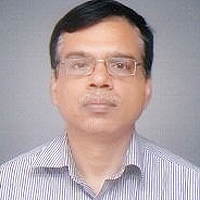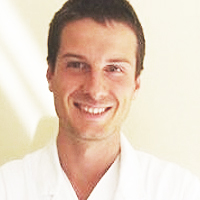Incidence and disease control of Zucchini yellow mosaic potyvirus
Published on: 5th May, 2020
OCLC Number/Unique Identifier: 8874829502
Zucchini yellow mosaic potyvirus (ZYMV) was first identified in northern Italy. It likes other species of the family Potyuiridue. ZYMV has been recorded in many countries since 1981. The efficient intercontinental spread of the virus can be explained by international trading of infected seeds. Since coat protein (CP) analysis has become a primary method for taxonomic assignment of potyviruses the aims were to characterize this genomic region of ZYMV originating from virus-infected cucurbitaceous seedlings. Virus infection in cucurbits is typically associated with mosaic symptoms on leaves and lumpy, distorted fruit. The range of symptoms produced by each virus can overlap and plants are commonly infected by more than one virus at once. The viruses are spread by many species of aphids moving through or within a crop. Control options include: destroying old cucurbit crops as soon as harvesting is completed destroying weeds and volunteer cucurbits, within and around crops as these harbor the viruses and/or the aphids separating new crops from maturing crops as these will have high levels of virus infection avoiding overlapping crops of cucurbits.
Gene polymorphisms CVPDr on some plants citrus in Bali Island
Published on: 7th May, 2020
OCLC Number/Unique Identifier: 8604563550
Citrus Vein Phloem Degeneration (CVPD) is the main disease of citrus plants in Indonesia. This disease is caused by Gram negative bacteria, Candidatus Liberibacter asiaticus. Almost all citrus plants are susceptible to this disease and only a few citrus plants such as seedless lime (Citrus aurantiifolia var. Seedles) and kinkit citrus (Triphacia trifoliate) are tolerant. Both of these citrus plants store DNA fragments of CVPDr which are considered as tolerant factors (841 bp). However, this study found that CVPDr DNA fragments were also found in citrus plants susceptible to CVPD disease. This research aims to study DNA polymorphisms from CVPDr DNA fragments in citrus plants on the island of Bali. The PCR test showed T. trifoliate and C. aurantifolia that are resistant to CVPD and Pylogenically are in the same group as C. nobilis var Buleleng, C. reticulate var. Slayer Buleleng, and C. amblicarpa. On the other hand, citrus plants susceptible to CVPD are in a different group. There are two types of citrus plants not containing CVPDr DNA fragments, namely C. nobilis var. Petang and M. paniculata L. These results indicate that the CVPDr DNA fragment polymorphism is a factor tolerant to CVPD disease.
Organizational and Human Factors in Dentistry: A Macroergonomic Approach to Maximize Dental Practice Performance and Minimize Burnout and Psychophysical Stress
Published on: 16th December, 2024
The psychophysical impact of a high-complexity environment such as the dental office is not a novelty. This article outlines the organizational and human factors that impact the overall health of dentists, assistants, hygienists, and administrative staff. A careless organizational and human factors approach cannot only function as a stress and error trigger but also affect the highly precise requirements of dentistry and task performance in the daily demands of the office. Ergonomics and human factors principles guidelines should be structured and taught from the basics in dental schools and supported by prevention programs and interventions in the dental professional field, as in other industries, to promote safety, health, and efficiency within the integration of humans, systems, and environments.Usually, the main focus of dentistry research is the physical aspect of the job; the high rates of musculoskeletal disorders are a real problem, but the cognitive-organizational element of the job is not a minimal issue, which highly contributes to physical-emotional exhaustion in the work environment.A fatigued mind impacts the physical aspect of the job, and physical fatigue impacts the mental aspect of the job. This dual effect in a job that requires dealing with anxiety and fear patients, administrative situations in the office, financial aspects, and technical and skill aspects from the dentist, among other requirements, makes dentistry a unique profession.This article addresses the components of the factors that promote cognitive depletion in our field and provides simple tips on controlling them to avoid burnout among dentists. It highlights the importance of awareness of how we manage the organization in the office and the effect on human behavior and performance. It wants to bring to light a common problem for dental practitioners and the workforce to prevent health and performance decrease.
An experimental study on effects of fluoridated water on Abelmoschus esculentus var. Soh-198 (Lady Finger) Arshi Iram*
Published on: 23rd March, 2021
OCLC Number/Unique Identifier: 8983555712
An experimental study of fluoride (F) accumulation in Abelmoschus esculentus var. Soh-198 and its effect on the growth and crop yield was conducted in a pot experiment. Eight different concentrations of F in the water were used for irrigation ranging from 2 to 14 ppm with distilled water as the control. Potentiometric determinations of the F content in different parts of the plant were made 45, 60, and 120 days after sowing the seeds (first, second, and third harvest, respectively). At the third harvest the highest mean plant part concentrations of F were recorded with 14 ppm F in the irrigation water: 9.0638 mg/kg in the roots, 5.6896 mg/kg in shoot, 4.5348 mg/kg in leaf and 3.563 mg/kg in fruit.
Silicon rates and beneficial microorganism on blast suppression and productivity of upland rice
Published on: 2nd April, 2021
OCLC Number/Unique Identifier: 9026721019
One of the primary constraints in upland rice cultivation is the disease blast (Magnaporthe oryzae), which can provide reduction up to 100% of the grain yield The use of silicon with beneficial microorganisms (bioagents) can be an alternative for the control of this disease and to provide an increase in the productivity of the rice grain. The objective of this work was to study the effect of rates of silicon with bioagents in blast suppression and grain yield of upland rice. The methodology used was tests carried out in field conditions, in two different areas: Capivara and Palmital farms, during the growing season 2015/2016. The experimental design was in a split-plot scheme with four replications. In the main plots were the silicon fertilization rates (0, 2, 4 and 8 ton ha-1) and in the subplots was the bioagents (1-without bioagents, 2-Pseudomonas fluorescens, 3-Burkholderia pyrrocinia, 4-Trichoderma asperellum, 5-a mixture of the three bioagents). The results showed that the use of 2 ton ha-1 of silicon with a mixture of bioagents was the best treatment to control leaf blast. Besides, from rates, 2 to 6 ton ha-1 of silicon in Capivara Farm and up to 8 ton ha-1 of silicon in Palmital Farm provided the highest grain yield. A mixture of bioagents provided the highest grain yield. In this sense, it was concluded that the best recommendation to connect blast control, grain yield and reduced amount of silicon was the use of 2 ton ha-1 of silicon with the mixture of bioagents.
Relationship between Vitamin D Deficiency and Lipopolysaccharides Porphyromonas gingivalis Bacteria in Stunting Children
Published on: 24th December, 2024
Background: Stunting is a condition of growth and development disorders in children under 5 years of age who appear shorter than their age caused by nutritional deficiencies. The stunted growth and development of children can be influenced by deficiencies in the intake of macronutrients such as protein and micronutrients such as calcium, phosphorus, zinc, and vitamin D. One nutrient that is relevant to current dental health research is vitamin D. Objective: This review article will further analyze the relationship between vitamin D deficiency and Porphyromonas gingivalis bacterial lipopolysaccharide in stunting children. Literature review: Vitamin D deficiency can cause various problems related to the oral cavity such as a decrease in salivary flow rate, buffer capacity, and salivary content such as protein. A decrease in salivary flow rate causes secretory Immunoglobulin A (IgA) to decrease, thus disrupting the colonization of normal microflora in the oral cavity. Reduced vitamin D levels can potentially increase the number of Porpyhromonas gingivalis bacteria and also lipopolysaccharides (LPS), thus inhibiting the proliferation and differentiation of alveolar bone cells. Conclusion: Therefore, lack of micronutrient intake such as vitamin D deficiency can trigger the growth of Porphyromonas gingivalis bacteria and an increase in bacterial products such as lipopolysaccharides, especially in stunted children.
The Police Power of the National Health Surveillance Agency – ANVISA
Published on: 27th December, 2024
The National Health Surveillance Agency (ANVISA) is a public institution created by Law 9782/1999, which integrates the field of Collective Health and acts in the prevention, control, and inspection of sanitary conditions in various sectors, such as food, health, pharmacies, hospitals, and commercial establishments. Its main objective is to guarantee the protection of public health, ensuring that products, services, and environments comply with established standards, to promote health and preventing diseases. To exercise its inspection and control function, Sanitary Surveillance has the power of sanitary police, which gives it the authority to apply necessary measures and curb practices that pose risks to the health of the population.The performance of the Sanitary Surveillance is fundamental to prevent health risks in any part of society and to guarantee national programs for patient safety. It is also essential to prevent diseases, control risks, and monitor compliance with health standards and specific regulations. The police power of Sanitary Surveillance consists of establishing norms and technical regulations, carrying out inspections and inspections, issuing temporary or permanent interdiction orders in establishments that do not comply with the norms, as well as forwarding complaints to the Public Ministry in cases of crimes against public health. Arrests carried out by Sanitary Surveillance agents are extreme measures and applied in serious situations of risk to public health or when there is repeated disrespect for sanitary regulations. The prohibited establishments have the right of defense and may seek to regularize the situation to obtain the release of activities.The performance of the Sanitary Surveillance has significant impacts on the prevention of disease outbreaks and epidemics. Identifying and correcting inappropriate practices helps to prevent the spread of pathogenic agents and reduce the risk of contagion in collective environments. The institution’s preventive and supervisory activities contribute to reducing risks to the population’s health, preventing disease outbreaks, food poisoning, and the proliferation of pests, among other problems. Finally, the importance of exercising police power with transparency, impartiality, and respect for individual rights is emphasized, always aiming at the collective interest and the promotion of the common good. In summary, Health Surveillance plays an essential role in protecting public health, seeking to ensure that the population has access to safe products and services, contributing to the improvement of quality of life and disease prevention.
Radiation Safety
Published on: 30th December, 2024
Bridging the Gap: Challenges and Solutions in Online Nephrology Education
Published on: 11th June, 2024
The outbreak of COVID-19 has created an unprecedented situation that has accelerated online education in areas like nephrology, which are traditionally served by onsite training. Efforts to educate clinicians remotely provide convenience and flexibility but may leave many open questions when it comes to how well-trained professionals maybe after completing their programs online. This review paper has emphasized the deleterious effects of online nephrology education and identified a number of ways in which it can be problematic such as lack of hands-on training, less patient interface, lack of proper supervision, and inconsistent quality of programs. The ability to make a difference, however, is further restricted by technological barriers and resource constraints. Whilst these programs tend to focus on creating knowledgeable graduates, they often fail to provide the clinical exposure necessary for preparedness. Hybrid programs - which combine online courses with clinical training in person are required to deliver high-quality nephrology care.
What to do from the Emergency Room in Case of Suspected Chemical Submission
Published on: 14th June, 2024
Chemical submission is a crime where criminals use substances to impose their will on victims. A 44-year-old woman comes to the Health Center disoriented in the temporal sphere, stating that “she does not remember what happened.” Her brother, the companion who brings her to the health center, says that he has found her in a place he does not usually frequent. The patient missed a bag she was carrying and could not locate her mobile phone. The patient and companion suspect that she may have been “drugged” in order to rob them. Given the suspicion that the patient may have been a victim of chemical submission, the Emergency Service is called to inform that the victim is going to be referred. The detection of biological samples of the substances used for submission is of vital importance.
















